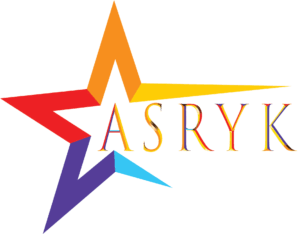Unleashing the Power of Cloud Computing Software: Revolutionizing the Digital Landscape
Introduction:
In the ever-evolving landscape of technology, one paradigm has risen to prominence, reshaping how businesses operate and individuals interact with the digital realm — Cloud Computing. At the heart of this transformative shift lies a spectrum of sophisticated tools, platforms, and services collectively known as Cloud Computing Software. This article delves into the intricate world of Cloud Computing Software, exploring its foundations, key components, evolving trends, and the profound impact it has on industries and individuals alike.
I. Foundations of Cloud Computing:
- Defining Cloud Computing:
- Cloud computing is a model that enables convenient, on-demand access to a shared pool of configurable computing resources (e.g., servers, storage, networks) over the internet.
- The fundamental shift from traditional on-premise infrastructure to cloud-based solutions has fueled innovation and scalability.
- Key Characteristics:
- On-Demand Self-Service: Users can provision and manage resources as needed.
- Broad Network Access: Services are accessible over the network and available to various devices.
- Resource Pooling: Resources are pooled to serve multiple customers, optimizing efficiency.
- Rapid Elasticity: Services can scale up or down based on demand.
- Measured Service: Usage is monitored, controlled, and billed, providing transparency and cost-effectiveness.

II. Cloud Service Models:
- Infrastructure as a Service (IaaS):
- IaaS provides virtualized computing resources over the internet, allowing users to deploy and manage virtual machines, storage, and networking.
- Popular IaaS providers include Amazon Web Services (AWS), Microsoft Azure, and Google Cloud Platform (GCP).
- Platform as a Service (PaaS):
- PaaS offers a platform that includes tools and services to facilitate application development, removing the complexities of infrastructure management.
- Examples of PaaS providers include Heroku, Google App Engine, and Microsoft Azure App Service.
- Software as a Service (SaaS):
- SaaS delivers fully functional applications over the internet on a subscription basis, eliminating the need for local installations.
- Common SaaS applications include Google Workspace, Microsoft 365, and Salesforce.

III. Cloud Deployment Models:
- Public Cloud:
- Public cloud services are provided by third-party providers and made available to the general public. They offer scalability, cost-effectiveness, and ease of access.
- Leading public cloud providers include AWS, Azure, GCP, and IBM Cloud.
- Private Cloud:
- Private clouds are dedicated environments exclusively used by a single organization. They offer enhanced security and customization but may require a higher upfront investment.
- Enterprises often opt for private clouds for sensitive data and regulatory compliance.
- Hybrid Cloud:
- Hybrid clouds combine elements of both public and private clouds, allowing data and applications to be shared between them. This provides flexibility, scalability, and the ability to optimize workloads.
- Hybrid cloud adoption is on the rise, catering to diverse business requirements.

IV. Cloud Computing Software Components:
- Virtualization Technologies:
- Virtualization enables the creation of virtual instances of computing resources, optimizing hardware utilization and enhancing flexibility.
- Hypervisors, such as VMware and Hyper-V, play a crucial role in virtualization.
- Containerization:
- Containers encapsulate an application and its dependencies, ensuring consistent deployment across various environments.
- Docker and Kubernetes have become synonymous with containerization, fostering agility and scalability.
- Cloud Management Platforms:
- Cloud management platforms streamline the orchestration and management of resources across multiple cloud providers.
- Examples include CloudHealth, RightScale, and VMware CloudHealth.
- Serverless Computing:
- Serverless computing allows developers to focus on writing code without worrying about server management. Functions are executed in response to events, ensuring optimal resource utilization.
- AWS Lambda, Azure Functions, and Google Cloud Functions are prominent serverless platforms.
- Data Storage and Databases:
- Cloud computing offers a variety of storage options, including object storage, file storage, and block storage.
- Cloud databases, such as Amazon Aurora, Microsoft Azure Cosmos DB, and Google Cloud Firestore, provide scalable and managed data solutions.
- Networking Solutions:
- Cloud networking tools enable the creation and management of networks, ensuring secure and efficient communication between cloud resources.
- Software-Defined Networking (SDN) and Virtual Private Clouds (VPCs) are integral components.

V. Evolving Trends in Cloud Computing Software:
- Edge Computing:
- Edge computing brings computation and data storage closer to the source of data generation, reducing latency and enhancing real-time processing capabilities.
- Edge computing is crucial for applications such as Internet of Things (IoT) devices and autonomous vehicles.
- Artificial Intelligence and Machine Learning Integration:
- Cloud providers are increasingly integrating AI and ML services, enabling developers to incorporate advanced analytics, natural language processing, and machine learning models into their applications.
- TensorFlow, AWS SageMaker, and Azure Machine Learning exemplify cloud-based ML services.
- Serverless Architecture Advancements:
- Serverless architectures continue to evolve with improved support for various programming languages, enhanced performance, and increased developer tooling.
- The serverless paradigm is becoming a cornerstone for microservices and event-driven architectures.
- Quantum Computing in the Cloud:
- Cloud providers are exploring the integration of quantum computing services, paving the way for quantum-powered applications.
- IBM Quantum, Azure Quantum, and AWS Braket signify the emergence of quantum computing in the cloud.
- Multi-Cloud and Interoperability:
- Organizations are adopting multi-cloud strategies to mitigate risks, avoid vendor lock-in, and optimize costs.
- Tools facilitating multi-cloud management and interoperability, such as Anthos (Google Cloud) and Azure Arc, are gaining prominence.

VI. Industry-Specific Applications:
- Healthcare Solutions:
- Cloud computing is transforming healthcare by facilitating data interoperability, enabling telemedicine, and enhancing medical research through scalable computing resources.
- HIPAA-compliant cloud solutions are vital for secure healthcare data storage.
- Financial Services:
- The financial sector leverages cloud computing for secure and compliant data storage, fraud detection, and algorithmic trading.
- Cloud solutions tailored to financial regulations, such as PCI DSS for payment processing, are crucial for compliance.
- E-commerce and Retail:
- Cloud-based e-commerce platforms provide scalability during peak seasons, ensuring seamless customer experiences.
- Inventory management, customer relationship management (CRM), and order processing benefit from cloud solutions.
- Education Technology:
- Cloud computing enhances remote learning experiences by providing scalable and accessible educational resources.
- Learning management systems (LMS) and collaborative tools are often cloud-based for flexibility and efficiency.

VII. Security and Compliance Considerations:
- Data Security:
- Ensuring data security in the cloud involves implementing encryption, access controls, and regular security audits.
- Cloud providers offer a range of security services, and organizations must adopt best practices for securing their cloud environments.
- Compliance Standards:
- Compliance with industry-specific regulations, such as GDPR, HIPAA, and SOC 2, is essential when handling sensitive data in the cloud.
- Cloud providers often offer compliance features and certifications to assist organizations in meeting regulatory requirements.
- Identity and Access Management (IAM):
- IAM solutions in the cloud govern user access, ensuring only authorized individuals have appropriate permissions.
- Multi-factor authentication and role-based access control are integral components of robust IAM.
- Incident Response and Disaster Recovery:
- Cloud computing necessitates robust incident response and disaster recovery plans to mitigate potential disruptions.
- Regular testing of backup and recovery processes is crucial for maintaining business continuity.

VIII. Challenges and Considerations:
- Cost Management:
- While cloud computing offers scalability and cost-effectiveness, mismanagement can lead to unexpected expenses. Organizations must implement effective cost monitoring and optimization strategies.
- Integration Complexity:
- Integrating cloud services with existing on-premise systems and other cloud platforms can be complex. Comprehensive planning and robust integration architectures are crucial.
- Data Transfer and Bandwidth Limitations:
- Bandwidth limitations and data transfer costs can impact organizations, especially when dealing with large datasets. Optimizing data transfer and leveraging Content Delivery Networks (CDNs) can help alleviate these challenges.
- Vendor Lock-In:
- Organizations must carefully consider the potential for vendor lock-in when selecting a cloud provider. Embracing multi-cloud or hybrid cloud strategies can mitigate this risk.

- Organizations must carefully consider the potential for vendor lock-in when selecting a cloud provider. Embracing multi-cloud or hybrid cloud strategies can mitigate this risk.
IX. Future Outlook and Concluding Thoughts:
Cloud computing software has not only transformed how businesses operate but has become an integral part of the digital fabric that defines our daily lives. As we look to the future, several trends and advancements are poised to shape the trajectory of cloud computing:
- Edge computing will continue to gain prominence, especially with the proliferation of IoT devices and the demand for low-latency applications.
- Integration of advanced technologies like AI, ML, and quantum computing will further enhance the capabilities of cloud computing platforms.
- The evolution of serverless architectures and the maturation of multi-cloud and hybrid cloud strategies will provide organizations with unprecedented flexibility.
- Enhancements in security, compliance, and data governance will address lingering concerns and foster increased trust in cloud solutions.




